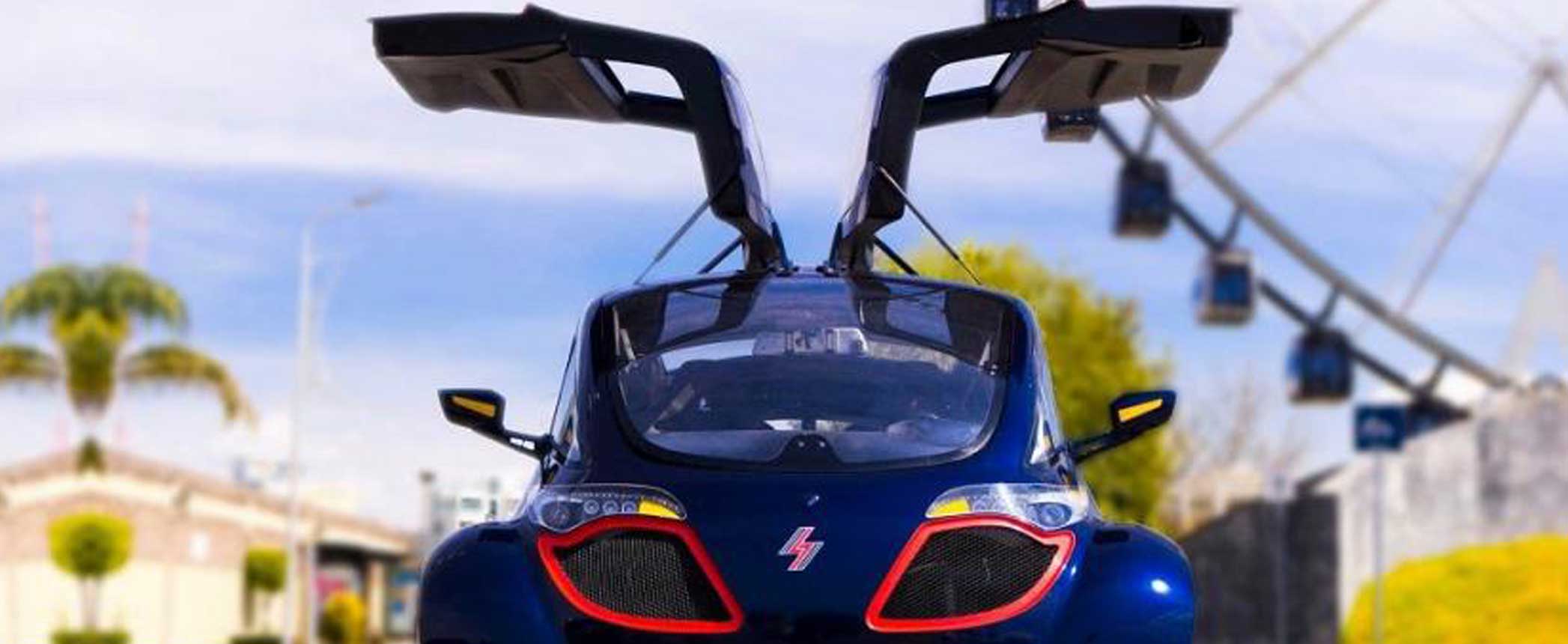
Mexico leads the region in electrified vehicle sales and is upping the ante with a domestically produced vehicle.
Just a few years ago, Leopoldo Ortiz started LM&TH, Mexico’s only car company producing electric vehicles, with just a few sketches of a concept car. Now, the company manufactures an electric bike, called the E-Raptor, with a range of 60 kilometers on a single charge. And in late 2020, an EV called the Thalia, named for Ortiz’s daughter, is set to hit the streets of Mexico.
The Thalia’s prototype weighs about 650 kilograms and is both sporty and affordable with a price of around U.S. $18,500. Its battery can support travel of about 200 km on a single charge, Ortiz said. The car will be made in three different models: the gullwing Thalia City designed for urban driving; the Thalia Funny, a convertible three-seater; and the Thalia Utility, a small two-seater light-duty truck. All three vehicles will be built on a modular chassis and share 80% of their components.
LM&TH said its goal is to produce 200 Thalias in the first few months of production and plans to increase production by 50 cars each month thereafter.
|
“The government is not paying attention to the electric vehicle industry here. They are still thinking about gasoline and petroleum. In more advanced countries, you see how the government is really helping and supporting the EVs and the technology.”
— Leopoldo Ortiz, LM&TH
|
“This is the first car in the history of Mexico that was made from the design, from the first sketches, to the production of the prototypes,” he said. “We offer something completely different than other companies, and buyers won’t have problems with them – they are very affordable.”
Mexico is the second-largest ICE vehicle market in Latin America, behind Brazil. However, it leads the region in EV sales. Last year, of the more than 1.53 million cars sold in Mexico, 472 were battery EVs and 968 were plug-in hybrid EVs, according to the Mexico Automotive Industry Association.
It is Ortiz’s hope that LM&TH will be the first 100% Mexican-made car. Although being “proudly Mexican,” about 20% of the car’s components are currently imported from China.
LM&TH is currently installing plug-in batteries to its EVs, but Ortiz predicted in the future the company will offer a selection of battery choices as power sources become cheaper and more powerful and as technology advances.
“The main problem at the moment are the batteries. In the future, this problem will be solved by placing solar stations on the roof of garages with very efficient panels, so you can charge your car’s batteries by using 100% solar energy,” he said. Ortiz predicted that by 2023, charging at home will be as commonplace as plugging in a cellphone each night.
Before EVs can populate the roads of Mexico, however, more public charging stations must be installed. Mexico has fewer than 1,000 charge points in the entire country, mainly located in large cities. What is more, the addition of charge points does not appear to be a priority for the Mexican government at this time. In fact, proponents of EVs have indicated that the government’s energy and environmental policies are focused elsewhere, despite Mexico City’s current boom of electric scooters and bicycles and the government’s goal to introduce between 300 and 500 electric buses in coming years.
Ortiz said that while the government may be encouraging e-mobility by offering incentives for people to purchase EVs and access to charging infrastructure, it is not necessarily helping manufacturers to produce them.
“In my opinion, the government must see and understand all the problems with pollution and traffic, and they really need to help Mexican companies to design and develop and build 100% Mexican electric vehicles,” he said. “The government is not paying attention to the electric vehicle industry here. They are still thinking about gasoline and petroleum. In more advanced countries, you see how the government is really helping and supporting electric vehicles and the technology.”
He believes that with government help, the EV industry, even in its infancy, can expand to mirror the number of foreign carmakers with manufacturing facilities in Mexico. Currently, U.S., Japanese and European carmakers all have production facilities in Mexico that make ICE vehicles. Ortiz’s factory is located in Puebla, once the epicenter of Mexico’s automotive industry. He says that the city is the only place in the country where one can work on design and manufacturing, not just on production lines. At one time, the automotive industry was the largest industry in Puebla, and Ortiz aspires to revive it with his company.

Sorry, a technical error occurred and we were unable to log you into your account. We have emailed the problem to our team, and they are looking into the matter. You can reach us at cs@lubesngreases.com.
Click here link to homepage